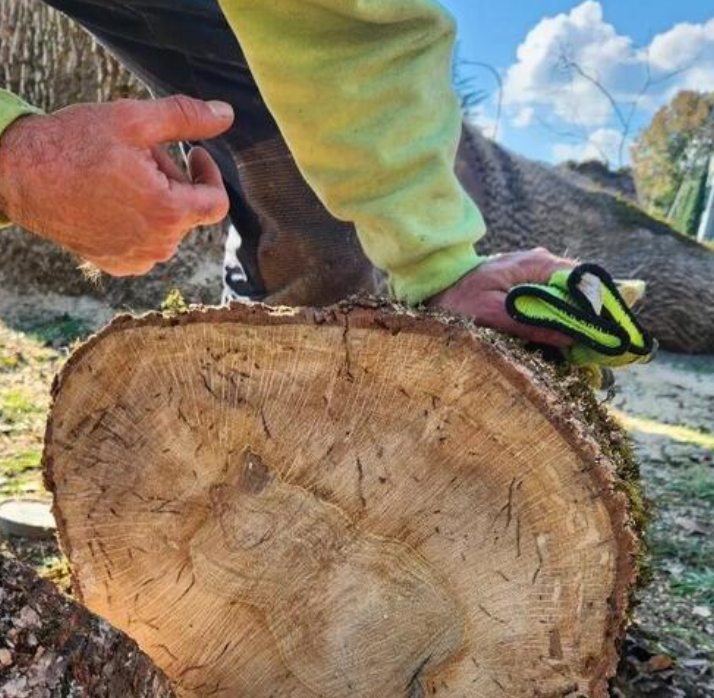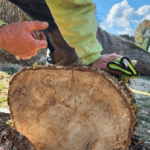An invasive insect known as the Mediterranean oak borer has been detected in Marion and Polk counties, raising new concerns about the health of Oregon’s iconic white oak trees. The beetle, which originates from Europe, North Africa, and western Asia, carries a dangerous fungus capable of infecting trees with a vascular wilt that can lead to their death.
Expanding Presence Across the Willamette Valley
Recent trapping conducted by state forestry officials revealed that the Mediterranean oak borer has now spread far beyond initial discovery sites. Summer surveys confirmed its presence not only in Marion and Polk counties but also in Clackamas, Multnomah, Washington, and Yamhill counties.
The findings are part of a broader monitoring effort launched by the Oregon Department of Forestry (ODF) and federal partners after infested Oregon white oaks were first found in Troutdale and Wilsonville. Dozens of traps were placed throughout the Willamette Valley to assess the beetle’s distribution.
Also Read
The results were sobering. More than 500 beetles were captured in about 30 traps on both sides of the Willamette River, stretching from Portland to south of Salem. According to Cody Holthouse, chair of Oregon’s Interagency Mediterranean Oak Borer Task Force, “The results show us that, unfortunately, Mediterranean oak borer is firmly and widely established in the northern Willamette Valley.”
Understanding the Threat
The Mediterranean oak borer (MOB) poses a serious ecological risk because of its relationship with a fungus that infects a tree’s vascular system, preventing it from transporting water and nutrients. Over time, this can cause branches to die back and eventually kill the entire tree.
Since the pest’s first detection in Oregon, 944 oak trees have been inspected. Officials report that 38 trees are currently infested, while 22 others believed to have been affected have already been removed to help slow the spread.
Christine Buhl, a forest entomologist leading ODF’s study of the beetle, said that while scientists are still learning about its biology and behavior in Oregon, its potential impact could be significant. “So far, we haven’t seen widespread decline of Oregon white oak,” Buhl noted. “Even trees near those heavily infested have not always shown symptoms, which makes me wonder if MOB prefers to attack trees that are already stressed or unhealthy.”
Buhl also observed that many of the infested trees had recent construction activity in their root zones, suggesting that soil disturbance might make trees more vulnerable.
Comparison to the Emerald Ash Borer Crisis
Oregon forestry officials are drawing parallels between this emerging threat and the ongoing crisis caused by another invasive pest — the emerald ash borer. That beetle, first discovered in Forest Grove in 2022, has devastated ash tree populations across the United States. By 2025, it had spread to six new locations in northwest Oregon, including Multnomah, Washington, Yamhill, and Clackamas counties, as well as northern Marion County.
Local governments, including the City of Salem, have already implemented preventive strategies to protect urban ash trees from the emerald ash borer’s destruction. However, experts hope the Mediterranean oak borer’s spread can still be managed before similar large-scale losses occur.
“My hope,” Buhl said, “is that we won’t see a widespread, rapid die-off of Oregon white oaks, like what’s happening with ash trees across the country.”
Ecological Importance of Oregon White Oak
The Oregon white oak is one of the Pacific Northwest’s most vital native species, providing essential habitat and food for numerous wildlife. From British Columbia to California, oak woodlands support a diverse range of birds, mammals, insects, and reptiles. Some of these trees can live for more than 500 years, making them an irreplaceable part of the region’s natural and cultural heritage.
The species has already faced mounting pressures from urban development, land clearing, and climate change. Now, the addition of an invasive insect and its associated fungus could place further strain on the state’s dwindling oak ecosystems.
Ongoing Research and Monitoring
Scientists are continuing to study the Mediterranean oak borer’s behavior, preferred habitats, and the full extent of its infestation in Oregon. They are also working to determine whether the beetle might spread to other native oak species or trees beyond the Willamette Valley.
For now, forestry officials are focused on monitoring, early detection, and tree health management to slow the pest’s advance. Homeowners and land managers are being urged to inspect their oak trees for signs of decline, such as branch dieback, small exit holes, or sawdust-like material near the trunk.
The ODF has stressed that public cooperation will be key in preventing further spread. “We’re learning more every season,” Buhl said, “but the earlier we identify infested trees, the better chance we have of containing the problem.”
As Oregon’s white oak forests face this new challenge, researchers remain cautiously optimistic that strong monitoring and community awareness can protect one of the state’s most treasured natural resources.












